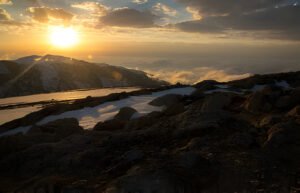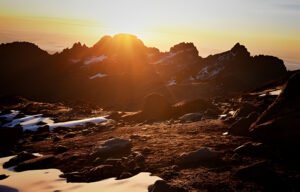Ultimate Kilimanjaro Route for Wildlife – 2025 Nature-Lover’s Trek Guide : Table of Contents
Ultimate Kilimanjaro Route for Wildlife – 2025 Nature-Lover’s Trek Guide : Why Wildlife Viewing on Kilimanjaro Matters
Mount Kilimanjaro is not just about reaching Uhuru Peak—it’s a journey through five ecological zones, each rich in biodiversity. Choosing the right Kilimanjaro route for wildlife gives you the rare opportunity to witness unique species in their natural highland habitats.
From blue monkeys to sunbirds and giant groundsels, this trek is a paradise for nature lovers.
Ultimate Kilimanjaro Route for Wildlife – 2025 Nature-Lover’s Trek Guide : Top Routes Compared for Nature Enthusiasts
| Route | Wildlife Viewing | Scenery | Crowds | Duration |
|---|---|---|---|---|
| Lemosho | ⭐⭐⭐⭐⭐ | ⭐⭐⭐⭐⭐ | Low | 7–8 days |
| Machame | ⭐⭐⭐⭐ | ⭐⭐⭐⭐ | Medium | 6–7 days |
| Rongai | ⭐⭐⭐⭐ | ⭐⭐⭐ | Low | 6–7 days |
| Marangu | ⭐⭐ | ⭐⭐ | High | 5–6 days |
✅ Best overall route for wildlife: Lemosho Route
Ultimate Kilimanjaro Route for Wildlife – 2025 Nature-Lover’s Trek Guide : Best Kilimanjaro Route for Wildlife in 2025
🥇 Lemosho Route
The Lemosho Route is widely regarded as the most scenic and biodiverse path on Kilimanjaro. Starting on the western side of the mountain, it traverses through lush rainforest, moorlands, and alpine deserts—ideal habitats for wildlife spotting.
Highlights include:
-
Blue monkeys, black-and-white colobus monkeys
-
Abundant birdlife like turacos and sunbirds
-
Less foot traffic, so more animal sightings
-
High success rate due to gradual acclimatization
“Lemosho is a photographer’s dream—wildlife, forest, and big views.” – Local Guide, Moshi
Ultimate Kilimanjaro Route for Wildlife – 2025 Nature-Lover’s Trek Guide : What Animals You Might See
During your Kilimanjaro wildlife trek, you may encounter:
-
Blue Monkeys (Rainforest zone)
-
Black-and-white Colobus Monkeys
-
Bushbucks and Duikers (lower slopes)
-
Serval Cats (rare, alpine areas)
-
Turacos, Tinkerbirds, Malachite Sunbirds
At lower altitudes, you might also hear or spot hornbills, chameleons, and an array of insects and butterflies.
Ultimate Kilimanjaro Route for Wildlife – 2025 Nature-Lover’s Trek Guide: Best Time for Nature-Lover’s Trek
| Season | Months | Why It’s Ideal |
|---|---|---|
| Short Dry | Jan–Feb | Clear skies, active wildlife |
| Long Dry | Jun–Oct | Best visibility, less rain |
| Green Season | March–May | Fewer trekkers, lush vegetation (but wetter) |
🟢 For birdwatching and lush flora: March to early May
🟢 For clearer views and more animals: January–February or June–August
Nature and Birdwatching Tips
-
Go slow on the trail – it helps you spot more birds and mammals
-
Binoculars are essential – especially for forest and canopy zones
-
Book with an operator that provides naturalist guides
-
Use early morning starts for best wildlife activity
Packing for a Wildlife-Focused Climb
Essentials for nature lovers include:
-
Lightweight binoculars
-
Bird field guide (East Africa edition)
-
Camera with zoom lens
-
Extra batteries and SD cards
-
Notebook or phone app for logging species
Include these in your gear checklist alongside essentials like waterproof gear, layers, and headlamps.
Conclusion
If you’re passionate about flora and fauna, the best Kilimanjaro route for wildlife in 2025 is without doubt the Lemosho Route. It offers a perfect balance of biodiversity, solitude, and panoramic views. Go beyond the summit—connect with nature every step of the way.








Hello, for all time i used to check blog posts here early in the
daylight, since i enjnoy to learn more and more. https://glassi-App.blogspot.com/2025/08/how-to-download-glassi-casino-app-for.html